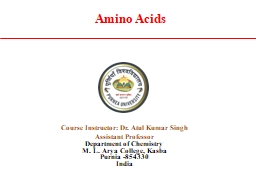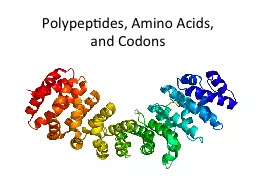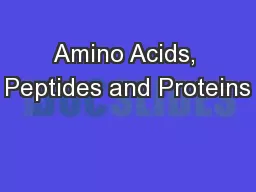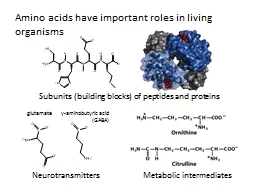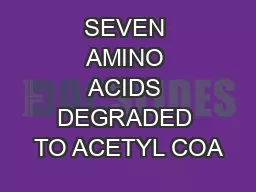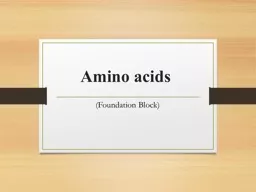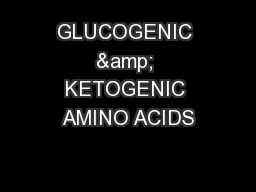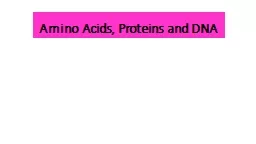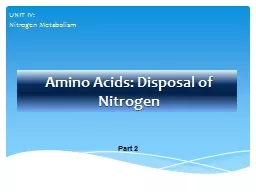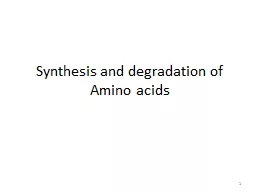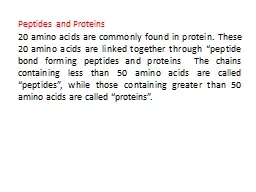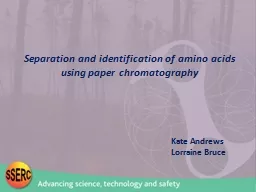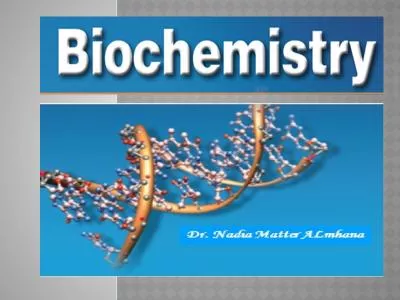PPT-Amino Acids Course Instructor: Dr.
Author : emily | Published Date : 2023-07-07
Atul Kumar Singh Assistant Professor Department of Chemistry M L Arya College Kasba Purnia 854330 India Amino Acids Amino acid are organic compounds that contain
Presentation Embed Code
Download Presentation
Download Presentation The PPT/PDF document "Amino Acids Course Instructor: Dr." is the property of its rightful owner. Permission is granted to download and print the materials on this website for personal, non-commercial use only, and to display it on your personal computer provided you do not modify the materials and that you retain all copyright notices contained in the materials. By downloading content from our website, you accept the terms of this agreement.
Amino Acids Course Instructor: Dr.: Transcript
Download Rules Of Document
"Amino Acids Course Instructor: Dr."The content belongs to its owner. You may download and print it for personal use, without modification, and keep all copyright notices. By downloading, you agree to these terms.
Related Documents

